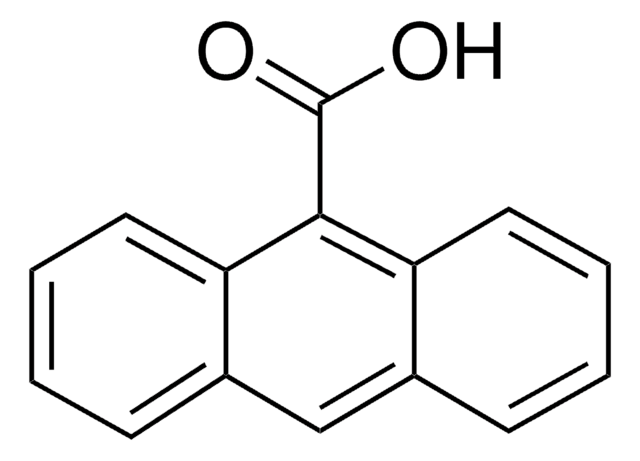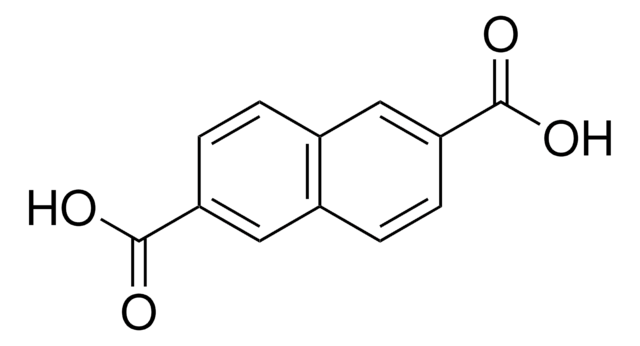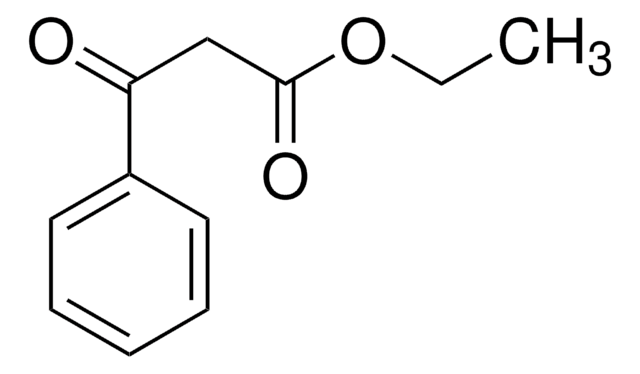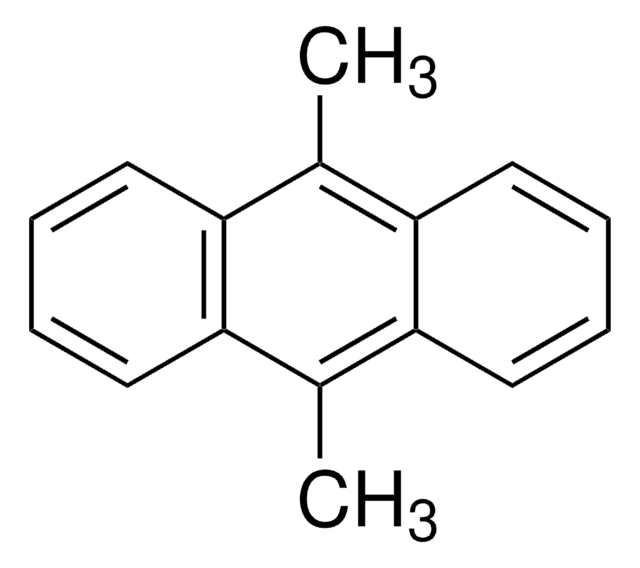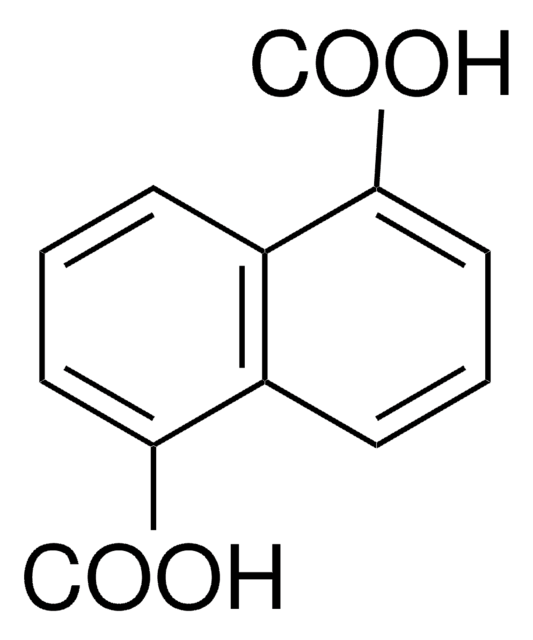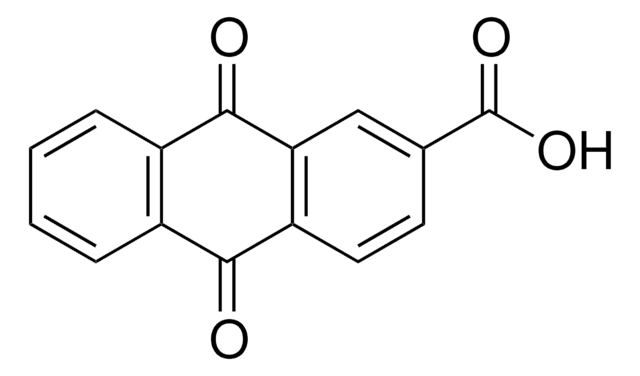724440
9,10-Anthracenedicarboxylic acid
95%
Sinónimos:
H2ADC
Iniciar sesiónpara Ver la Fijación de precios por contrato y de la organización
About This Item
Fórmula empírica (notación de Hill):
C16H10O4
Número de CAS:
Peso molecular:
266.25
Número MDL:
Código UNSPSC:
26111700
ID de la sustancia en PubChem:
NACRES:
NA.23
Productos recomendados
Nivel de calidad
Análisis
95%
formulario
solid
características de los productos alternativos más sostenibles
Design for Energy Efficiency
Learn more about the Principles of Green Chemistry.
sustainability
Greener Alternative Product
mp
>300 °C
categoría alternativa más sostenible
, Enabling
cadena SMILES
OC(=O)c1c2ccccc2c(C(O)=O)c3ccccc13
InChI
1S/C16H10O4/c17-15(18)13-9-5-1-2-6-10(9)14(16(19)20)12-8-4-3-7-11(12)13/h1-8H,(H,17,18)(H,19,20)
Clave InChI
FDFGHPKPHFUHBP-UHFFFAOYSA-N
Descripción general
9,10-Anthracenedicarboxylic acid (H2L) is an anthracene based dicarboxylic compound, which has a larger conjugating π-system that enables the development of fluorescent materials. It has interesting magnetic and luminescent properties. It can be used as a bridging carboxylic acid ligand with a steric bulk due to the presence of its anthracene ring.
We are committed to bringing you Greener Alternative Products, which adhere to one or more of The 12 Principles of Greener Chemistry. This product has been enhanced for energy efficiency. Find details here.
Aplicación
H2L can be potentially used in the formation of highly porous nanotubular and ultramicroporous metal organic frameworks (MOFs) for greener applications like hydrogen storage, methane storage and gas separation.
Palabra de señalización
Warning
Frases de peligro
Consejos de prudencia
Clasificaciones de peligro
Aquatic Acute 1
Código de clase de almacenamiento
11 - Combustible Solids
Clase de riesgo para el agua (WGK)
WGK 3
Punto de inflamabilidad (°F)
Not applicable
Punto de inflamabilidad (°C)
Not applicable
Elija entre una de las versiones más recientes:
¿Ya tiene este producto?
Encuentre la documentación para los productos que ha comprado recientemente en la Biblioteca de documentos.
Los clientes también vieron
Cadmium (II) and lanthanum (III) coordination architectures with anthracene-9, 10-dicarboxylate: Crystal structures and photoluminescent properties
Wang J, et al.
Inorgorganica Chimica Acta, 385(6), 58-64 (2012)
Hisato Matsumoto et al.
Organic & biomolecular chemistry, 15(31), 6575-6583 (2017-07-28)
We report anthracene-diurea compounds which behave as anion sensors based on the fluorescence emission regulated by the substitution position on the anthracene ring. Anthracene-diurea compounds exhibit different excited-state intermolecular proton transfer (ESIPT) reactions depending on the pattern of the substituents.
Nuestro equipo de científicos tiene experiencia en todas las áreas de investigación: Ciencias de la vida, Ciencia de los materiales, Síntesis química, Cromatografía, Analítica y muchas otras.
Póngase en contacto con el Servicio técnico